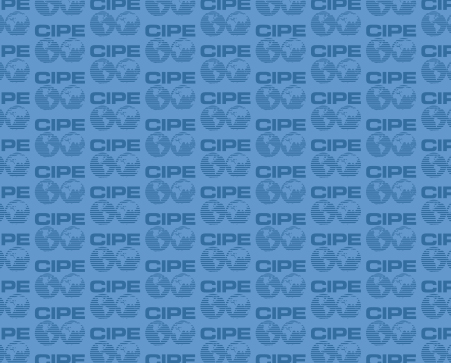
Within the last five years, crowdsourcing has risen as new phenomena both in the business world and in international development. Coined by Jeff Howe in WIRED magazine, the term crowdsourcing traditionally refers to using free or low-cost information or labor from a “crowd” to accomplish a task.
The innovative potential of this tool is impressive. Around the world crowdsourcing technologies have facilitated new ways to connect services with clients, track protests, fund businesses, map disasters, and more.
Crowndsourcing allows academics, non-profits, and development organizations to gather large amounts of information cheaply and efficiently. For developing countries, crowdsourcing technologies provide ways for citizens to search for local hospitals, map post-election violence, and identify business locations.
For entrepreneurs and small businesses, crowdsourcing technologies, especially crowdfunding, present significant opportunities. Websites such as KickStarter.com, Indiegogo.com, and GoFundMe.com offer platforms for people to easily invest small amounts of money in projects started by entrepreneurs (as well as activists, artists, and others), helping them to overcome barriers such as access to finance. However, at the moment these tools are mostly restricted to a few OECD countries. Services targeted at entrepreneurs in the developing world, like Kiva.org, use a more traditional micro-lending model with small online donors providing the seed capital.
Apart from access to funding, crowdsourcing as a data collection and mapping tool is also a driver of innovation. One group in particular for whom this tool has the potential to open new doors for is women.
In Egypt, for example, ten years ago surveying instances of sexual harassment was a costly and labor intensive endeavor. Today, women can text a case of sexual harassment as soon as it happens, and it will automatically be uploaded to the website HarrassMap.org. The HarrassMap initiative aims to “end the social acceptability of sexual harassment” by documenting where and when sexual harassment happens. All cases are reported anonymously, meaning that victims of sexual harassment do not have to face the cultural humiliation that goes along with reporting sexual harassment through official channels.
Zambia’s Women in Technology organization, Asikana Network, recently launched an initiative to track all Women in Technology organizations and projects across Africa. Their mission is simple: create a digital map of women’s tech organizations in Africa. Not only does this allow women tech organizations to (literally) put themselves on the map, it also provides networking and collaboration opportunities for organizations facing similar challenges.
Both HarrassMap and Zambia’s Women in Technology project highlight ways in which crowdsourcing can be used to bring attention to an issue and empower groups that may be left on the economic or social sidelines.
As with all technologies, however, there are drawbacks. To name a few, information gathered through crowdsourcing can be limited as participants’ contributions can often not be reviewed or validated by others; without incentives, entries gathered through crowdsourcing can be of low quality; and because data is voluntary it is generally not representative in the same way as a traditional census or survey.
Even with limitations such as these, crowdsourcing and its variants are redefining the boundaries of entrepreneurship, both in financing and access to information, making it easier for individuals and groups around the world to solve pressing social issues and support aspiring entrepreneurs.
Molly Brister is the Global Programs Assistant at CIPE.
Published Date: December 27, 2012